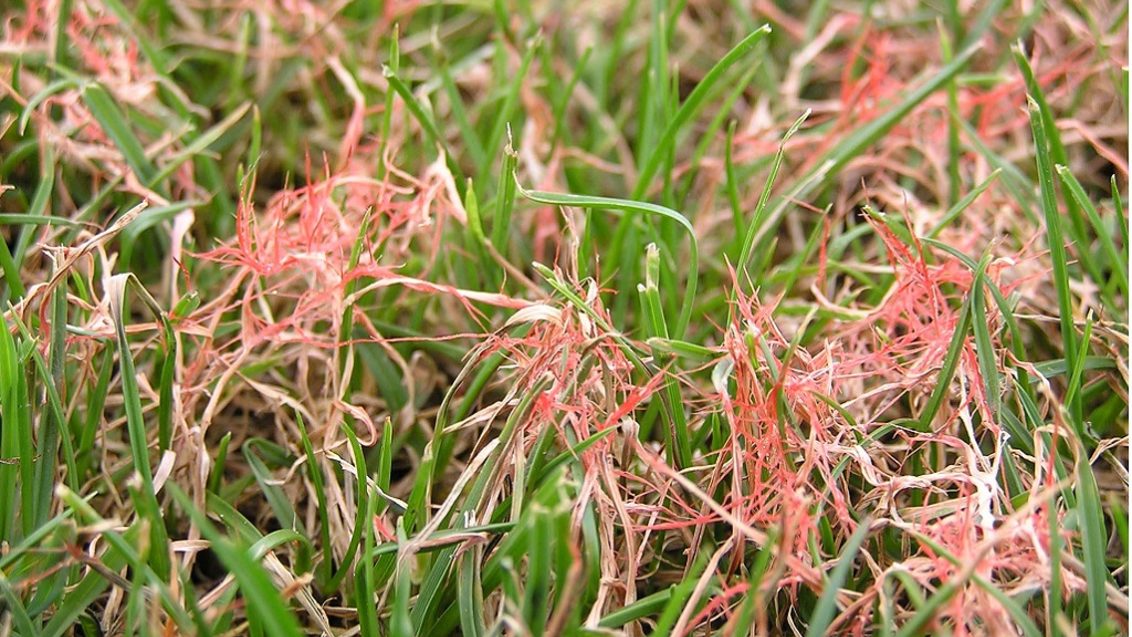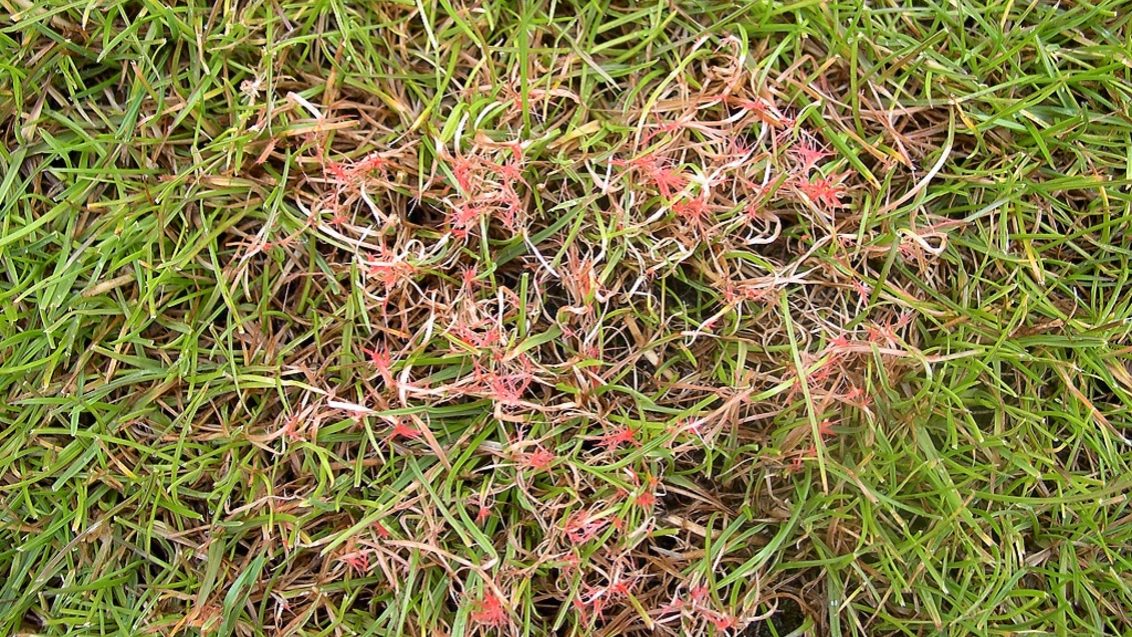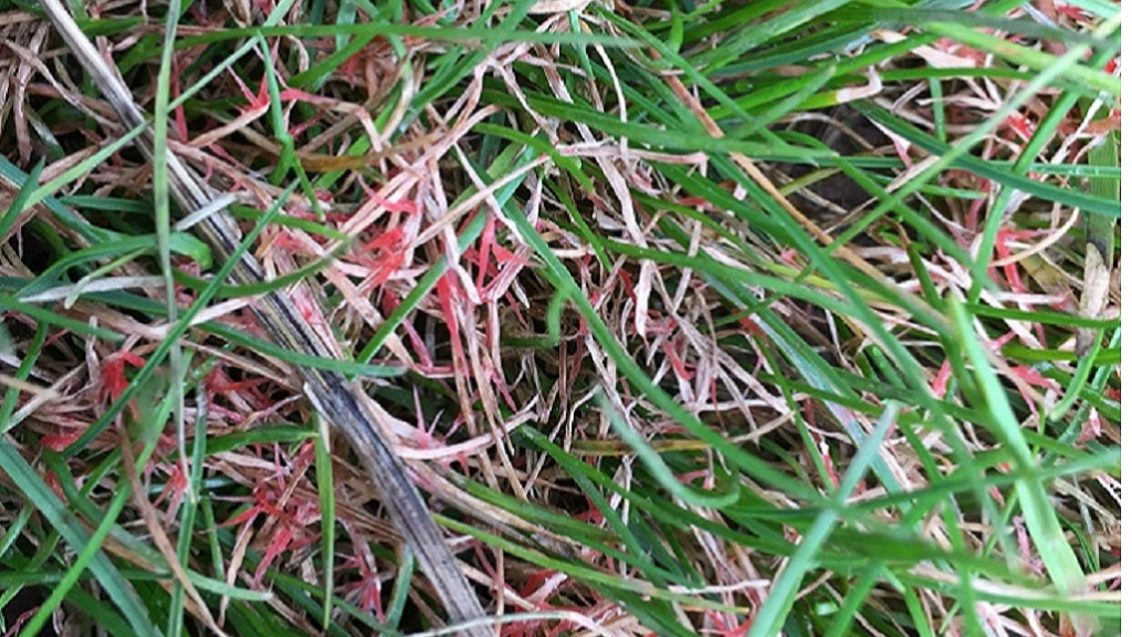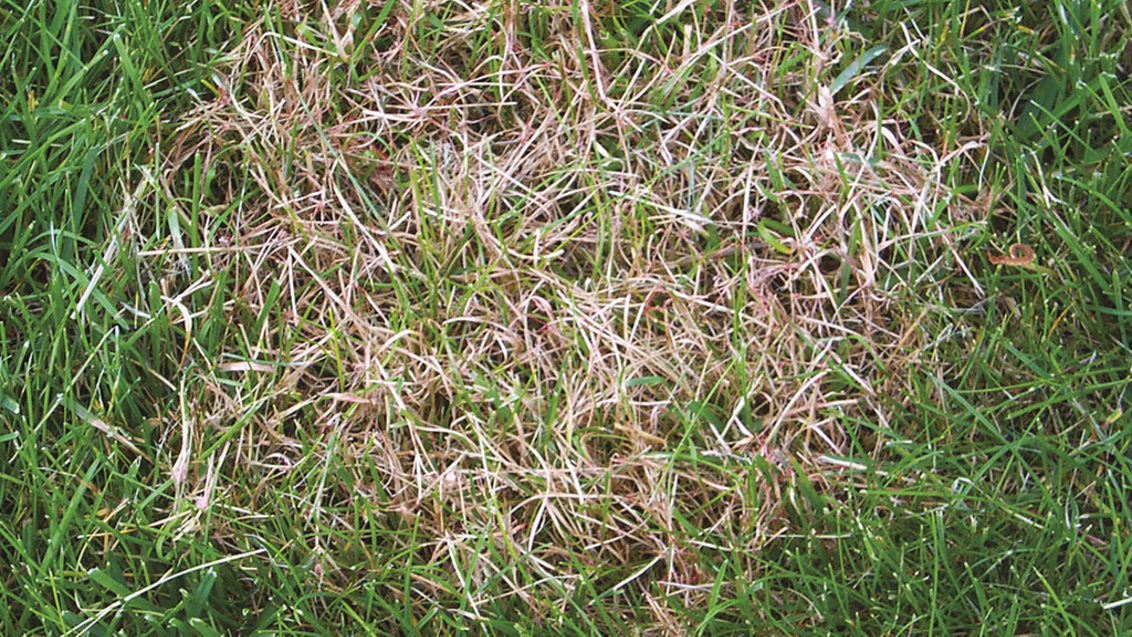Red Thread
Turf Disease
The symptoms depend on the grass species and severity of attack. Symptoms often start as small mostly circular patches of dead leaves interspersed with live plants. The patches may also have a pink tinge (Plate 2). Closer inspection will reveal pale pink to red needle or horn-like outgrowths (the red threads - Plate 2) Pink flocks of mycelium (resembling candyfloss) may also be present in conducive conditions.
Where is Red Thread found?
Any area of turf, especially golf greens, tees, fairways, bowling greens, lawns, parkland and sports pitches.
When is Red Thread likely to attack turf?
When growing conditions are good infection may be transient but under poor growing conditions attacks may be severe.
Effects of Red Thread
Red Thread does not commonly affect the playing quality of the turf but reduces the aesthetic appearance. Red thread may thin the sward.
High Risk Situations
- Fescue is the most severely affected, although there is variation among subspecies and cultivars. Lolium perenne is also very susceptible.
- Low fertility.
- Warm and wet conditions.
- Slowly growing turf.
- Moisture retentive turf surface.
Integrated Turf Management
- Use recommended rates of fertiliser at the recommended timing to prevent low fertility problems occurring.
- Oversow with grass varieties that are less susceptible to red thread.
- Maintain good drainage and manage the turfgrass to reduce surface moisture.
- Keep thatch layers to a minimum.
- Light penetration (especially morning sunlight) and airflow should be encouraged to dry the turf surface quickly.
- Collecting clippings helps to prevent the spread of infected material.
Fungicidal Control
Trials have shown that Heritage controls red thread.




